Coins of German States from 1800 to 1871

Anhalt-Bernburg33 coins

Anhalt-Dessau32 coins

Anhalt-Kothen1 coins

Bavaria800 coins

Baden383 coins

Berg26 coins

Brunswick-Wolfenbüttel227 coins

Bremen30 coins

Württemberg409 coins

Hamburg124 coins

Hanover486 coins

Hesse-Homburg26 coins

Hesse-Darmstadt250 coins

Hesse-Cassel279 coins

Saxe-Weimar-Eisenach66 coins

Saxe-Meiningen152 coins

Saxony-Albertine593 coins

Waldeck-Pyrmont78 coins

Wallmoden-Gimborn3 coins

Westphalia87 coins

Würzburg33 coins

Hohenzollern-Hechingen31 coins

Hohenzollern-Sigmaringen60 coins

Isenburg4 coins

Knyphausen and Varel2 coins

Lauenburg1 coins
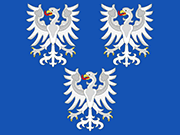
Leiningen7 coins

Lippe46 coins

Mecklenburg-Schwerin150 coins
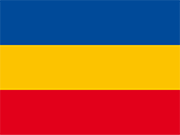
Mecklenburg-Strelitz36 coins

Nassau187 coins

Oldenburg52 coins

Regensburg4 coins

Reuss-Greiz71 coins

Reuss-Schleiz57 coins

Saxe-Altenburg26 coins

Saxe-Hildburghausen45 coins

Saxe-Coburg and Gotha144 coins

Saxe-Coburg-Saalfeld110 coins

Frankfurt am Main189 coins
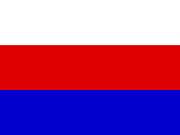
Schaumburg-Lippe24 coins

Schwarzburg-Rudolstadt64 coins

Schwarzburg-Sondershausen18 coins
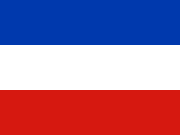
Schleswig-Holstein52 coins
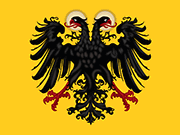
Stolberg-Wernigerode2 coins

Frankfurt10 coins

Furstenberg6 coins

Prussia1020 coins

Ansbach-Bayreuth21 coins
Rare coins values - Coin Price Guide

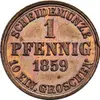
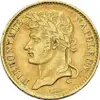
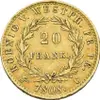
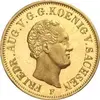







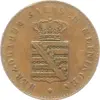
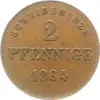
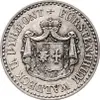
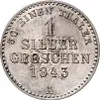




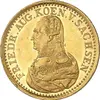



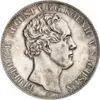
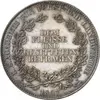


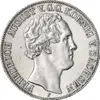
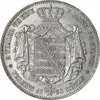








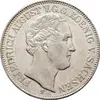
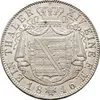






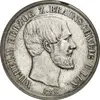





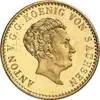
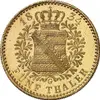






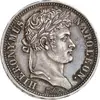
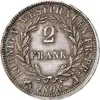


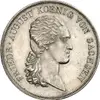
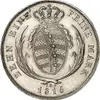




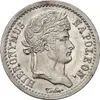
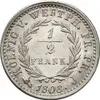


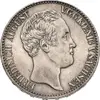
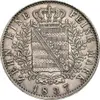





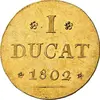

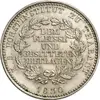

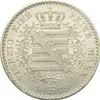


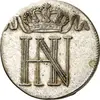

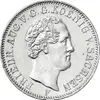
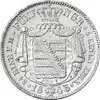
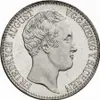
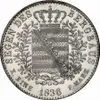


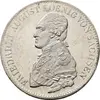



Coins of German states from 1800 to 1871
Historical review
In the early 19th century, the Holy Roman Empire of the German Nation still existed, but the Napoleonic Wars rendered its fate inevitable. The Confederation of the Rhine was founded at the initiative of the French Emperor and various states left the Holy Roman Empire. Bavaria, Baden, Saxony and Wurttemberg were among those states. The Holy Roman Empire could not give countermeasures against it, and thus Francis II abdicated as Holy Roman Emperor in 1806. After almost a millennium, the empire collapsed, and it would take almost seven decades before a German national state could emerge.
As a result, there were essential political and economic changes.
At the Congress of Vienna in 1815, Europe was reorganized after Napoleon’s defeat and, instead of restoring the German imperial dignity, the German Confederation was founded. Initially, 35 sovereign states united in a free union that existed till 1866. Rivalries between Austria and Prussia caused the so-called Brothers War (known in Germany as Deutscher Krieg). Prussia was victorious in this conflict and founded North German Confederation — the predecessor to the German Empire.
France was defeated in the dispute over Spanish succession and began a war against Germany to avoid the formation of a unity of German states and the rise of Prussia. But it failed. After German military union led by Prussia won the Franco-Prussian War in 1870/71, southern German states — Bavaria, Wurttemberg, Baden and Hessen — joined North German Confederation. This finally resulted in the foundation of the German Empire in 1871. Prussian king Wilhelm I was the first emperor and his coronation took place in the Hall of Mirrors at Versailles.
Coins of German states from 1800 to 1871
In the early 19th century, Germany was split into a number of independent countries. There were kingdoms, electorates, grand duchies, duchies, principalities, counties, free reigns, free Hanseatic cities and free cities. Each one minted its own coins. As a rule, these coins had a portrait of the current ruler on the frontside and the national coat of arms on the backside. Larger coins had a short inscription (also known as legend) bearing the name of the monarch, his noble titles and the territories under his dominion. Smaller coins usually had only nominal value, e.g., heller or pfennig, sometimes in an abbreviated form. An enormous number of countries attributed to the variety of currencies making trade across national borders more difficult. There were ducats, pistoles, krones, thalers, guldens, groschens, good groschens, kreuzers, pfennigs, hellers, stübers, grotens, shillings, körtlings, schwarens, silver groschens, new groschens, St. Mary’s groschen, franks, centimes and it is just to name the most common ones.
The mutual conversion of currencies was extremely complicated, making trade and the economy difficult. At the period of the German Confederation, efforts were made to standardize various coinage systems. The German Customs Union was founded and its member states presented the vereinstaler (union’s taler). It was based on the Dresden Coinage Convention of 1838 and the Vienna Monetary Treaty of 1857. They agreed that 30 vereinstalers were to be minted of one pound, i.e., 500 grams of pure silver. Net weight of one vereinstaler was 16.66 grams (500:30). Vereinstalers had been main coins of German states until the German Empire was founded in 1871. This was the main coin circulating at that time, and the metal value was at least equal to the nominal value (in contrast to small change coins).
For example, such a vereinstaler was equal to:
- in Prussia: 30 silver groschens of 12 pfennigs each;
- in Saxony: 30 new groschens of 10 pfennigs each;
- in Hessen-Kassel: 30 silver groschens of 12 hellers each.
In the southern German states, the basic coin was the gulden and it made difficult to convert it into talers.
For example, one taler was equal to:
- in Bavaria: 1 and ¾ gulden or 105 kreuzers (1 gulden = 60 kreuzers of 4 pfennigs or 8 hellers each)
- in Austria-Hungary: one and half gulden (1 gulden = 60 kreuzers and 100 new kreuzers as from 1857)
It was only in 1871 when the mark, composed of 100 pfennigs, became the unified currency of the new-born German Empire while coins of the old German states were gradually taken out of circulation.
Heinrich Hegen